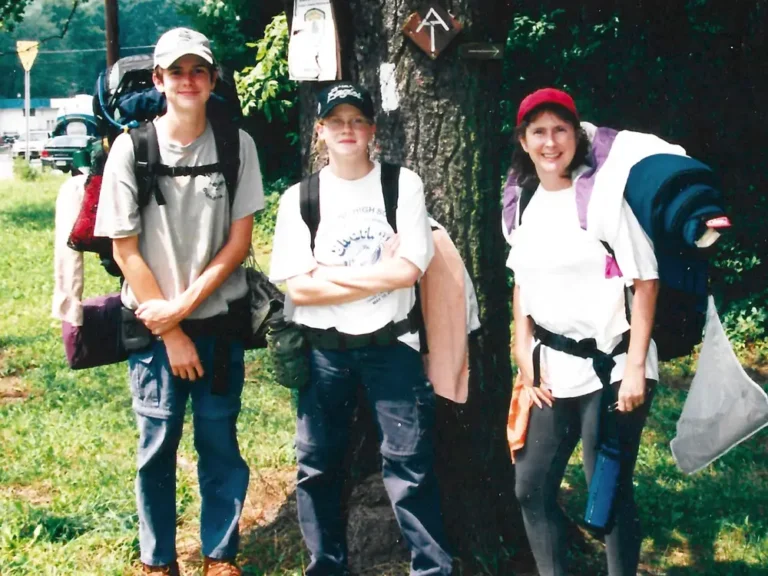A traveler who’s been to 35 national parks shares her top 5 for fall leaf-peeping
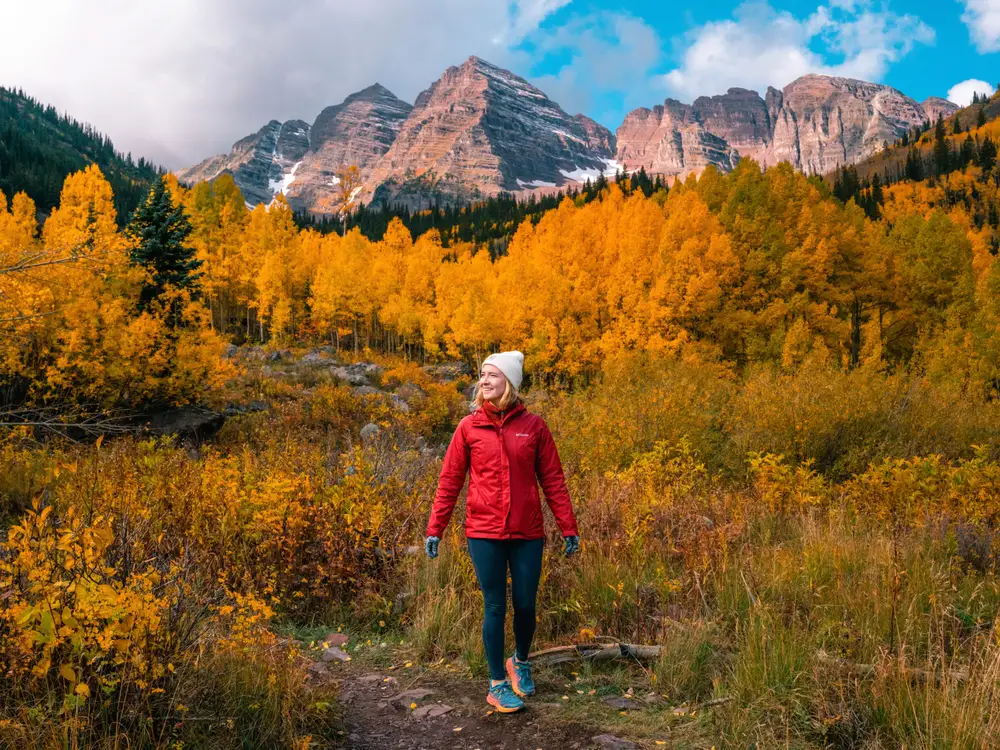
Alexandra Blodgett has been to 35 national parks in the US. Here, she’s pictured at Maroon Bells in Colorado.
We’re slowly inching closer to winter, but there are still a few weeks left to savor fall.
Visiting national parks to see the season’s colors, or “leaf peep,” is a popular pastime and gives a major boost to some states’ economies. Last year, an analysis published by Appalachian State University reported that fall foliage tourism would generate about $30 billion from 24 states.
Alexandra Blodgett, a travel content creator, understands the appeal.
She’s been to 35 national parks, as well as every state in the US, and has enjoyed a myriad of experiences, from hiking scenic trails to basking in stunning views from cliff tops. However, her favorite, by far, is watching national parks undergo their annual autumnal transformation.
“I’m pretty focused on outdoor natural beauty,” said Blodgett, who has been traveling in an RV with her husband for three years and documenting their journey.
If you plan on hitting the road to catch the last of the fall foliage — in most places, it’s already underway or has reached its peak — Blodgett has a few under-the-radar and chilled-out spots to recommend.
Here are her five favorite national parks to visit in fall.
North Cascades National Park in Washington
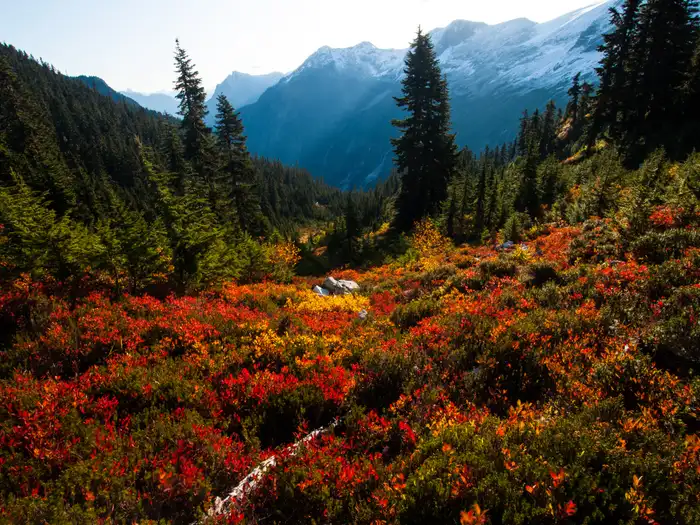
Autumn sunrise at Whatcom Pass, North Cascades National Park, Washington.
Blodgett said not enough people talk about this 684,000-acre park, which is a three-hour scenic drive from Seattle.
And yet, its larch-lined valleys and pristine glacial lakes make it a must-visit spot.
“I think that’s a very underrated national park,” Blodgett told B-17. “The reason is that many of the most beautiful places are deep in the backcountry.”
“Because of that, it’s a really great place for hikers, and it’s still a beautiful park for anyone to visit because there are a ton of beautiful things that you don’t necessarily have to hike super deep to get to,” she added.
What stands out are the towering larch trees, bursting in shades of gold, as you pass by the Maple Pass Loop or Blue Lake. En route, there’s also the Diablo Lake Overpass, which overlooks Diablo Lake with jagged peaks known as the American Alps as a backdrop.
Peak fall period: Leaves along the byway leading to the park begin changing color in late September, with some spots peaking by mid-October.
Tree types: There are yellow Aspen, multi-colored Mountain Ash, golden larches, and red oaks, to name a few.
Capitol Reef National Park in Utah
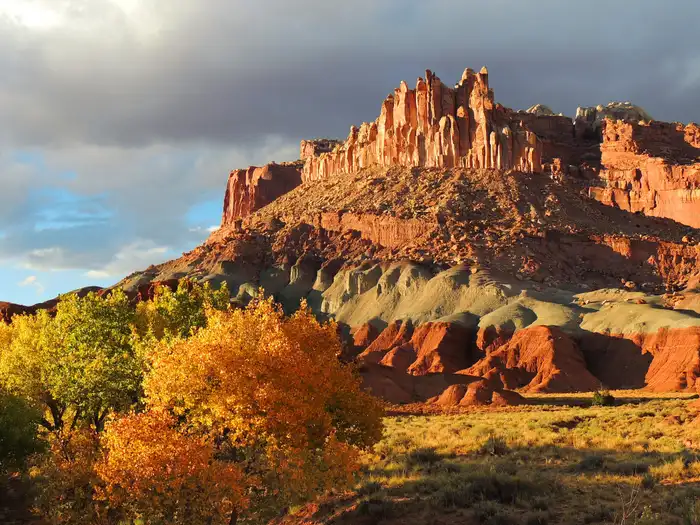
The castle in Capitol Reef National Park in autumn.
This national park is home to epic sights, including yellow leaves set against the backdrop of the red rock canyons.
Blodgett said Capitol Reef is a popular road-trip stop because it’s one of “the big five,” or the five national parks in Utah: Arches, Bryce Canyon, Canyonlands, Capitol Reef, and Zion.
Despite its popularity, Blodgett said there are plenty of underrated things to see and experience there, “and most people just kind of scratch the surface just to tick it off their list.”
Instead, she highly recommends you “make sure you have enough time to explore a little bit more in-depth.”
Byway 12 has some fantastic stops for a full view of the fall shades. If you prefer to explore by foot, you can hike along the Hickman Bridge or Capitol Gorge Wash, and if you’re traveling with kids, fruit picking at the orchards is great to add to your list.
Peak fall period: Trees at an elevation of 8,000 to 10,000 feet reach peak fall colors in early October, slowly spreading downwards by mid-October, with the lowest elevations peaking end of October to early November.
Tree types: Aspen trees, Cottonwoods, and box elder trees, and some fruit orchards can be seen throughout the park.
Crater Lake National Park in Oregon
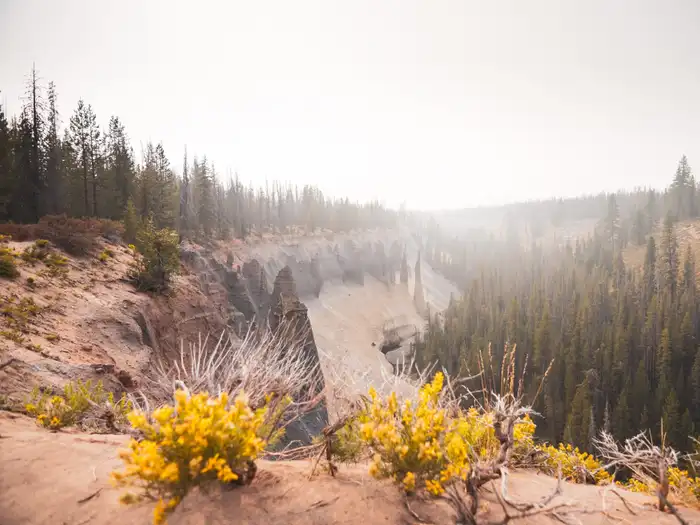
The Pinnacles trail in Crater Lake National Park.
Picture this: 21 square miles of pristine blue water set against the backdrop of Cascade cliffs and some of the cleanest air in the country. America’s deepest lake is a sight for all seasons, but especially worthy of a visit in the fall.
Blodgett recommends spending at least two full days.
“There’s one drive throughout the park, Rim drive, that would definitely take up a whole day or more depending on how much time you want to spend on it, and then another day to explore some of the other little ad hoc areas like the Rim village and the Pinnacles,” she said.
She said it’s another park that doesn’t get as much attention, although it is well-trafficked throughout the year.
“It’s unique,” she said. “There’s a ton of history behind [the lake], and it’s just super beautiful.”
Blodgett believes many people think of the park as a summer or fall travel destination, but it is just as, if not more, beautiful in the wintertime.
“They get so much snow that it’s mind-blowing to see that much snow in one spot,” she said. “I love that about Crater Lake.”
Peak fall period: In Oregon, trees are bursting with color in mid-October, but leaves start to turn golden in the first few weeks of September.
Tree types: Expect to see the three maples native to Oregon — the big leaf maple, the vine maple, and the Rocky Mountain maple — as well as dogwood, birch, and oak.
Theodore Roosevelt National Park in North Dakota
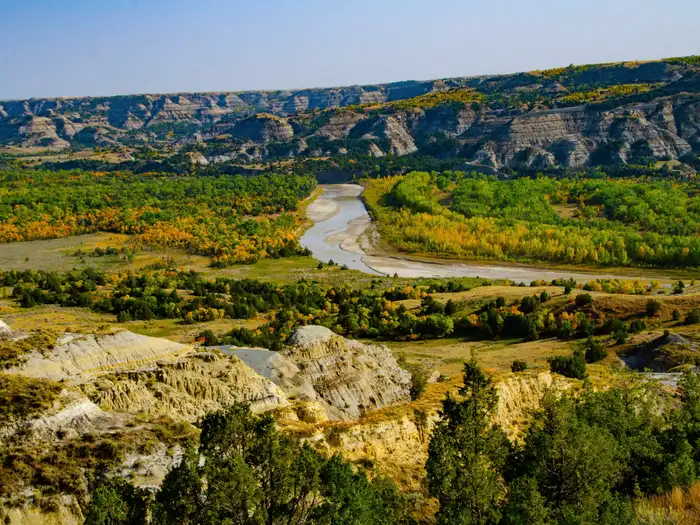
River Bend Overlook at Theodore Roosevelt National Park.
Although getting to this western North Dakota park requires some determination, it’s worth a trip in the fall, especially if you also love wildlife spotting.
“The free-roaming feral horses in the park are really unique, and a lot of people don’t know that they’re there. So that’s kind of fun,” said Blodgett.
In addition to the horses, visitors might catch a glimpse of bison, elks, white-tailed and mule deer, other mammals, amphibians, and reptiles.
The best way to experience the park’s fall colors is to drive along the 28-mile scenic drive in the North Unit, or you could hike to the top following the Boicourt Overlook Trail in the South Unit.
Peak fall period: Leaves change in mid-September and are most vibrant in mid-October. Trees in the North Unit tend to transform earlier than those in the South Unit.
Tree types: The park predominantly features cottonwoods.
Badlands National Park in South Dakota
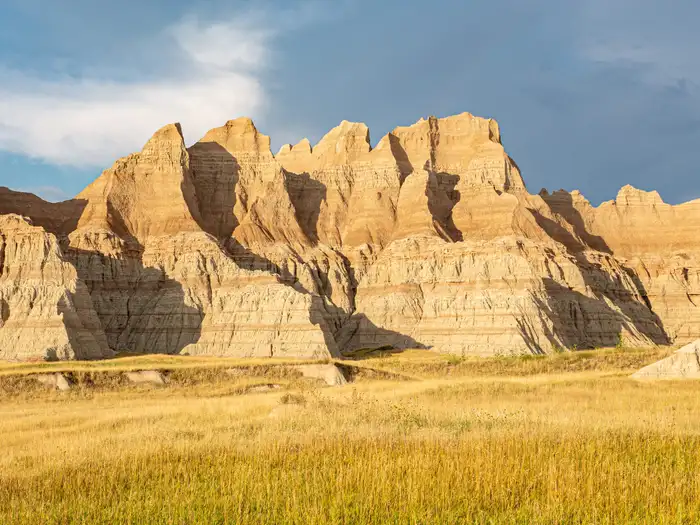
Blodgett shared that the Badlands National Park is among the most underrated yet unique fall destinations.
This isn’t your typical fall foliage experience, given that most of the badlands are primarily home to grasslands. Still, the towering red sandstone buttes more than make up for forest views.
Blodgett told B-17 she thinks Badlands National Park is another “beautiful yet underrated park.”
She recommends spending two days at the park which will give you ample time to spot some wildlife and stargaze at night.
Peak fall period: Grasslands begin changing color from green to golden yellow at the end of summer, in early September, and remain colorful until October.
Tree types: A large part of the park is covered in knee-high prairie grass but is also home to over 400 other plant varieties.




